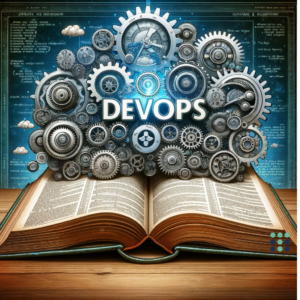The definition of an Agile Community of Practice (CoP) is a group of people who share a passion for agile such as Agile Coaches who formally hold an agile title or agile champions, who are affiliated with agile due to their interest or knowledge.
The volunteer members of the Community of Practice regularly come together to share domain knowledge about their agile expertise. This is an excellent way to enhance learning of individuals and teams, create opportunities for coaching and mentorship, and to help identify knowledge gaps across teams.
Most importantly, it’s great for establishing a sense of fellowship which can help to promote morale and productivity!
Unfortunately, while many organizations see the value of embedding Agile Coaches in their organization to help with transformation efforts, most organizations don’t feel the need to sponsor a formal Agile Community of Practice which means they typically don’t exist. This shouldn’t prevent a group of people from establishing one through a grassroots effort.
If you find yourself in an organization where the “mothership” (as one member of the TacTec team describes a Community of Practice) doesn’t exist and you want to get one started, here are 5 easy steps.
1. Prepare your Pitch by Writing a Purpose
Having an Agile Community of Practice is a grand idea but you will need to build a membership so start by “preparing your pitch”.
Write a draft purpose statement. It doesn’t have to be perfect, because it will be updated once you build your core membership. However, having a general idea of a purpose can help you to create some buzz about joining.
Using a “Team Purpose Canvas” is a great way to get inspiration.
2. Recruit the People!
Once there is a draft purpose created, you need to identify people who will be the Community’s first members!
Speaking with your immediate peer group is an easy recruitment effort. Start by speaking with those who you already know but be sure to reach far and wide to find those that could benefit from being part of the “mothership”.
Agile Coaches are usually not part of a centralized office so you may need to do some investigative work to find them and be prepared for a plot twist as you may find that an Agile Community of Practice already exists!
TacTec Insider Tip: We would recommend starting with people who are formally in an Agile Coaching role then open up membership to Agile Champions (those who advocate for agile but are not formally responsible for transformation efforts) at a later date.
Gather your names and invite them for an informal gathering so the draft purpose can be shared for CoP.
Hopefully, through this conversation you are creating some interest and are getting positive vibes. At the end of this step, do you have at least 5 people who are committed to helping to launch the Community of Practice?
3. Conduct a Working Session
It’s important to create a set of working agreements and redraft the purpose for the newly forming CoP. Don’t skip these two steps!
Working agreements should cover topics such as:
- How often will the Community meet and at what time? Don’t forget to retrospect!
- Location?
- Who will own the meeting invites?
- What type of behaviors are to be expected?
- How does the Community define success?
- What is the optimal team size for the Community?
- Where to store a backlog of ideas or topics?
- How much time do members have to contribute to the CoP?
Next, review the initial draft purpose and revise as a team.
This exercise gives all members the opportunity to contribute to the team purpose which will generate some ideas about what to cover in the first and future sessions.
4. GO! Have your first official Community of Practice session!
Now that you have some formalities established for the newly established Agile Community of Practice, have your first “official” session!
Usually in these first sessions, the members are getting to know each other and it’s important to be mindful of the stages a team goes through such as forming, storming, norming and performing. Yes, even a team of Agile Coaches are not immune to Bruce Tuckman’s stages of development!
After getting to know one another, the members may want to discuss practices across teams or share their own barriers to agility to see if other members have found ways to resolve.
If the CoP still struggles with what to discuss at this first session, use a
Lean Coffee format and allow the members to come up with topics to discuss or even actions the CoP would like to take.
For example, does the CoP want to offer “services” to non-members? Will it build a public portal as a way to help share knowledge? There are many things a CoP can accomplish, just be sure to keep it fun, yet effective!
5. Spread the word!
If you have the ability to write a blog, write a blurb in a company newsletter or even place posters up anywhere there is space, spread the word about the new Agile Community of Practice, its purpose and some success experienced by the Community of Practice. Spread the word whenever there is an opportunity!
Drop us a comment below if you have been part of an Agile CoP! We’d love to hear about your experience!






